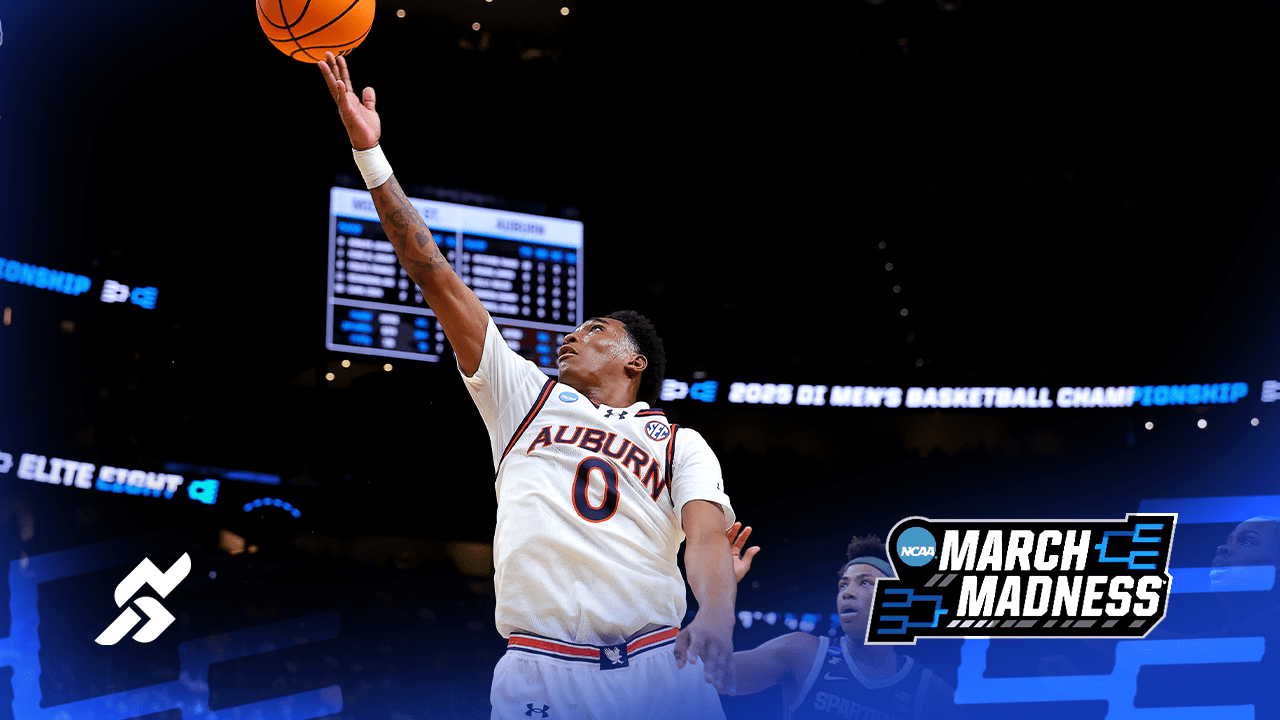
TV ratings for the Elite Eight round of the NCAA men’s basketball tournament took a hit on Sunday, as the pair of CBS broadcasts were disadvantaged by comparisons with the Easter-boosted results of a year ago.
According to Nielsen live-same-day data, Sunday’s deliveries were down 26% versus the year-ago windows, which aired on what is now widely recognized as one of the bigger days for OOH lifts on the sports calendar. By way of example, 23% of the impressions for the Easter Sunday round of the 2023 Masters were served up in OOH environments, a catch-all that includes everything from public venues, such as brunch spots and bars, to private residences—basically anywhere an audio signal can be detected by one of Nielsen’s wearable “people meters.”
Sunday’s games averaged 9.5 million viewers, a steep drop compared to last year’s slate (12.8 million). Houston’s 69-50 blowout against Tennessee averaged 7.1 million viewers in CBS’s 2 p.m. ET window, down 32% versus the analogous Purdue-Tennessee game in 2024, a closely-fought contest that averaged 10.4 million viewers. And while Michigan State played Auburn tough in the late-afternoon game, the TV turnout of 11.7 million viewers was down 23% compared to the year-ago North Carolina State-Duke showdown, which scared up the biggest Easter Sunday audience of any kind in 11 years with an average draw of 15.1 million.
The OOH lift took on even more resonance earlier this year, when Nielsen expanded its methodology to include all markets in the Lower 48, boosting its coverage from 65% of DMAs to 100%. Before OOH deliveries were blended into the vanilla TV sample in fall 2020, Easter was long considered a ratings black hole, as millions of otherwise engaged fans remained uncounted under the legacy measurement system.
While the Sunday games slumped under the weight of currency shifts and Duke comps, the Saturday deliveries were up 21% on TBS and truTV. The Blue Devils’ 85-65 primetime demolition of Alabama averaged a hearty 9.8 million viewers, up 26% from last year’s Clemson-Alabama telecast (7.8 million), while Florida’s come-from-behind triumph over Texas Tech drew 7.5 million viewers, good for a 16% improvement over the comparable Illinois-UConn outing (6.5 million).
All told, deliveries for the Elite Eight were down 10% year-over-year, a decline which effectively put the brakes on the tournament’s early hot streak. Through the first two rounds, CBS and the TNT Sports networks posted the biggest March Madness numbers since 1993.
As CBS preps for the home stretch in San Antonio, the turnout for the men’s tourney is now flat versus 2024, averaging 9.4 million viewers across all windows.
A steady year-to-year performance remains an enviable outcome, given our ever-diminishing TV habit; in the last year alone, HUT levels (industry argot for “households using television) have fallen 9%, while bundled cable subscriptions dropped 12% to 46.9 million homes. When cheaper virtual MVPD packages are tossed in with the traditional cable/satellite/telco-TV players, the total pay-TV head count is now at 67.7 million, putting overall penetration at 54% of U.S. TV homes. At its peak in 2010, the cable bundle reached 91% of U.S. TV homes, with nearly 104 million subscribers.
The decline of the bundle has had a deleterious downstream impact on broadcast TV viewing, as only 4% of U.S. homes receive their TV signals exclusively via an antenna/over-the-air setup.
The all-chalk Final Four tips off Saturday afternoon on CBS with Florida-Auburn priming the pump for the Houston-Duke nightcap. The last time Duke put in a Final Four appearance on CBS was in 2010, when the Blue Devils roughed up West Virginia 78-57 in the primetime window in front of an audience of 15.8 million viewers.
A national draw on par with the New York Yankees, Los Angeles Lakers and Dallas Cowboys, Duke was instrumental in serving up the biggest college basketball audience of the 21st century. In 2015, the program’s 68-63 victory over Wisconsin averaged a staggering 28.3 million viewers, marking the 16th-biggest draw in March Madness history.

